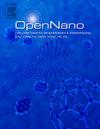Carrageenan bionanocomposite films incorporating Ag and Zn-Doped CeO₂ nanoparticles for active food packaging applications
Q2 Pharmacology, Toxicology and Pharmaceutics
引用次数: 0
Abstract
The increasing demand for sustainable and safe food packaging has led to the exploration of bio-based materials and advanced packaging technologies. This study investigates the incorporation of silver (Ag) and zinc (Zn) doped cerium oxide nanoparticles (CeO₂ NPs) into carrageenan-based bionanocomposite films to enhance their antimicrobial properties, mechanical strength, and hydrophobicity. The synthesis of CeO₂ NPs, doped with varying concentrations of Ag and Zn, was achieved using the green synthesis method with green tea extract as a reducing agent. Characterization techniques such as X-ray diffraction (XRD), transmission electron microscopy (TEM), and Zeta potential analysis confirmed the successful doping and stability of the nanoparticles. The bionanocomposites were evaluated for their mechanical properties, water contact angle, and antibacterial activity against Escherichia coli and Bacillus cereus. Mechanical testing revealed that the addition of CeO₂ NPs, particularly Ag-doped CeO₂ NPs, significantly improved the tensile strength and Young's modulus of the bionanocomposites. Hydrophobicity assessments showed that Zn-doped CeO₂ NPs enhanced water resistance compared to Ag-doped CeO₂ NPs, making them more suitable for food packaging applications. Zn and Ag-doped CeO₂ NPs exhibited superior antibacterial activity compared to undoped CeO₂ NPs, with 20 wt% Ag-doped NPs showing the highest antibacterial activity compared to Amoxicillin as positive control and other variations. The study concludes that Zn and Ag-doped CeO₂ NPs are promising additives for developing effective and sustainable active food packaging materials.
含有Ag和zn掺杂CeO 2纳米粒子的卡拉胶生物复合膜用于活性食品包装
对可持续和安全食品包装的需求日益增长,导致了对生物基材料和先进包装技术的探索。本研究研究了将银(Ag)和锌(Zn)掺杂的氧化铈纳米粒子(CeO₂NPs)掺入卡拉胶基生物纳米复合膜中,以提高其抗菌性能、机械强度和疏水性。以绿茶提取物为还原剂,采用绿色合成法合成了不同浓度Ag和Zn掺杂的CeO₂NPs。表征技术如x射线衍射(XRD)、透射电子显微镜(TEM)和Zeta电位分析证实了纳米颗粒的成功掺杂和稳定性。研究了生物纳米复合材料的力学性能、水接触角以及对大肠杆菌和蜡样芽孢杆菌的抗菌活性。力学测试表明,添加CeO₂NPs,特别是ag掺杂的CeO₂NPs,显著提高了生物纳米复合材料的抗拉强度和杨氏模量。疏水性评价表明,与掺银的CeO 2 NPs相比,掺锌的CeO 2 NPs的耐水性增强,使其更适合食品包装应用。与未掺杂的CeO₂NPs相比,Zn和ag掺杂的CeO₂NPs表现出更好的抗菌活性,其中20% ag掺杂的CeO₂NPs与阳性对照阿莫西林和其他变量相比表现出最高的抗菌活性。研究结果表明,锌和银掺杂的CeO₂NPs是开发有效和可持续的活性食品包装材料的有前途的添加剂。
本文章由计算机程序翻译,如有差异,请以英文原文为准。
求助全文
约1分钟内获得全文
求助全文
来源期刊

OpenNano
Medicine-Pharmacology (medical)
CiteScore
4.10
自引率
0.00%
发文量
63
审稿时长
50 days
期刊介绍:
OpenNano is an internationally peer-reviewed and open access journal publishing high-quality review articles and original research papers on the burgeoning area of nanopharmaceutics and nanosized delivery systems for drugs, genes, and imaging agents. The Journal publishes basic, translational and clinical research as well as methodological papers and aims to bring together chemists, biochemists, cell biologists, material scientists, pharmaceutical scientists, pharmacologists, clinicians and all others working in this exciting and challenging area.
 求助内容:
求助内容: 应助结果提醒方式:
应助结果提醒方式:


